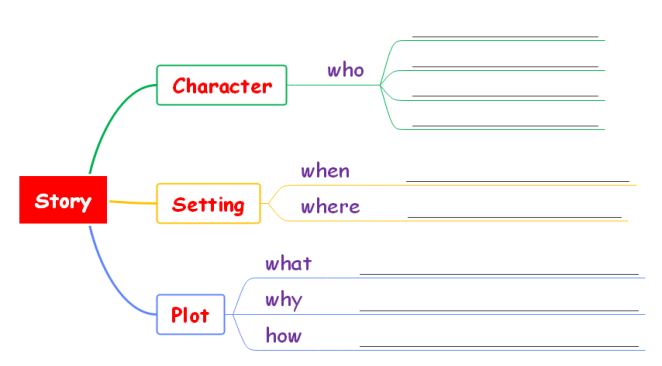

加入时间:2022-05-25

加入时间:2022-05-25

加入时间:2022-05-25

加入时间:2022-05-25

加入时间:2022-05-25
加入时间:2022-05-25

加入时间:2022-05-25

加入时间:2022-05-25

加入时间:2022-05-25

加入时间:2022-05-25

加入时间:2022-05-25

加入时间:2022-05-25

加入时间:2022-05-25

加入时间:2022-05-25

加入时间:2022-05-25

加入时间:2022-05-25
高三英语读后续写专题指导
Learning objectives:
During this period, we are expected to:
1.read and have a better understanding of the given plot and predict the following plot reasonably;
2.read and explore the theme of the story;
3.read and appreciate the language style;
4.polish the first draft through cooperation.
Step 1. Lead in (performance analysis )
Q: What’ the most difficult part in continuation writing from your perspective?
____________________________________________________________________________
Criteria of assessment (评价标准)
|
档次 |
要求 |
|
第五档(21-25) |
☆与所给短文融洽度高,与所提供开头语衔接合理。 ☆创造了新颖、丰富的内容,富有逻辑性,续写完整。 ☆所使用语法结构和词汇丰富、准确,表达流畅,可能有些许错误,但完全不影响意义表达。 ☆自然、有效地使用了段落间、语句间的连接成分,使所续写短文结构紧凑,全文结构清晰,前呼后应,意义连贯。 |
Step 2. Reading for the plot
1) Finding the main elements of the given material

2) Analyzing the character
David:
On the day of the big country run:
▲…who was standing by himself off to the side by a fence.____________________
▲ His usual big toothy smile was absent today. ____________________
▲ He hesitated and then said he had decided not to run. _____________________
Before the day:
▲ David had not missed a single practice, and although he always finished his run long after the other children, he did always finish. _______________________
▲…and was proud of his strong determination. ______________________ àQ: Did David really want to quit running?
_______________________________________________________________________________
3) Predicting the following plot
Q1: Would David participate in the running at last? How do you know?
____________________________________________________________________________________
Q2: What would change David’s decision? How do you know?
____________________________________________________________________________________
![]()
Predicting the following plot by raising questions:
Paragraph 1: We sat down next to each other, but David wouldn’t look at me.
问题链:1) What was David doing?
2)__________________________________________________________________
3)__________________________________________________________________
4)__________________________________________________________________
![]()
Paragraph 2: I watched as David moved up to the starting line with the other runners.
问题链:1) _________________________________________________________________
2)__________________________________________________________________
3)__________________________________________________________________
4)What was the result ?
4) Pair work: Assessing sample 1
Step 3. Reading for the theme
1. Q: What is the theme of the story?
A. We shouldn’t laugh at others for their shortcomings.
B. We should stick to our dreams regardless of what others might say.
C. We should care about people around us.
2.Pair work: Assessing sample 2
Step 4. Reading for the language
1. Pair work: Assessing sample 3
2.Appreciating the language style in given material. (How to make the writing vivid)
(para 4) “I was afraid that kids from other schools would laugh at him,” he explained uncomfortably.
(para 5) I turned to find him coming towards me, his small body rocking from side to side as he swung his feet forward.
(para 2)I looked around and finally spotted David, who was standing by himself off to the side by a fence.
Step 4. Reading for writing (Group work)
1. Writing & polishing
Group 1-4 rewrite para 1; Group 5-8 rewrite para 2.
2.Peer review (同伴互评)
Do peer review among groups
Group 1à Group 2 àGroup 3 àGroup 4 àGroup 1
Group 5à Group 6 àGroup 7 àGroup 8 àGroup 5
useful expressions& sentence patterns:
轻声说 whisper/murmur/mutter 温柔地拍某人的肩膀 pat sb. on the shoulder
眼里满是怀疑 with disbelief in one’s eyes 蹒跚地站起来 stagger to one’s feet
一摇一晃 sway from side to side 像箭一样冲出去 shoot forward like an arrow
信号枪响起 the starting gun was fired 落后 lag behind
被绊倒 trip over 爬起来 pick oneself up
追赶某人 catch up with sb. 为…欢呼 cheer for
雷鸣般的掌声thunderous cheers and applause 喘气 gasp for air
冲过/到达终点线 cross/reach the finishing line
非谓语动词/定语从句/名词性从句/状语从句/强调句/倒装句…
Step 5. Summary
Step 6. Homework
1. Polish up your writing based on the criteria of assessment and the suggestions from your classmates.
2. Collect the detailed descriptions in your notebook.
sample 1:
I watched as David moved up to the starting line with the other runners. His walks were determined. While everyone was prepared, the gun went off. David ran immediately and his speed was quick. Although he was behind others at the beginning, David still kept his speed and ignored anything around him. Over time, David ran over others and finally won the match. Joy welled up in him. I also cheered for him. After this day, David was braver than before.
sample 2:
I watched as David moved up to the starting line with the other runners. Later, the match began. All the other students tried their best to run, but David couldn’t do that. Fortunately, his friends were willing to run with David, which made David feel happy. They ran slowly, talking to each other with smile on their faces. Several minutes later, David felt tired. However, the students were willing to give a helping hand. They helped David carry his bag. Finally, they succeeded in crossing the finish line. They hugged each other and smiled happily.
sample 3:
